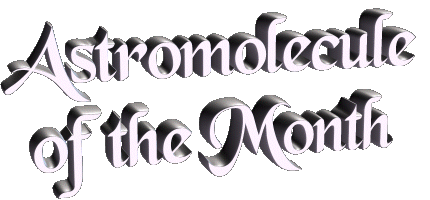|
Acetylene (C2H2) has no dipole moment and is thus not amenable to detection
via pure rotational spectroscopy. The first detection of non-terrestrial acetylene was in the atmosphere of Jupiter,
as reported by Ridgway in 1974 via the ν5
bending mode (see below). Due to symmetry, there is a second, degenerate bending mode, ν4. The initial
observations of C2H2 were made with the
McMath solar telescope
at Kitt Peak. The detection was confirmed later in 1974 by
Combes et al.. Acetylene has been detected in
all of the other gas giants as well: in Saturn in 1979 by
Moos & Clarke,
in Uranus in 1984 by
Encrenaz et al.
and in Neptune in 1986 by
Caldwell et al.
Acetylene has also been observed in the atmosphere of
Titan and in
comet Hyakutake.
Detections outside the solar system followed the initial detections on Jupiter and elsewhere.
It was discovered in the circumstellar shell of IRC +10 216 by
Ridgway et al. in 1978 using the
Mayall 4-meter telescope at Kitt Peak.
This detection used the combination band of ν5 and the ν1 (stretching) mode (see below).
The first interstellar detection was reported in 1989 by
Lacy et al.
| 



